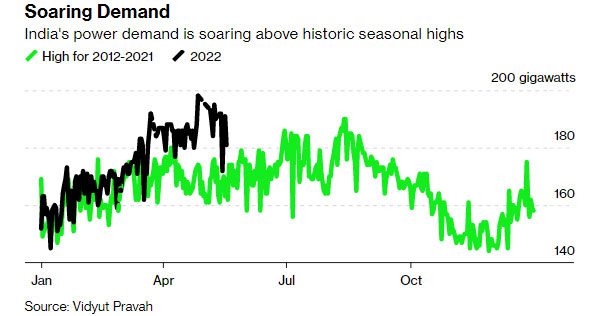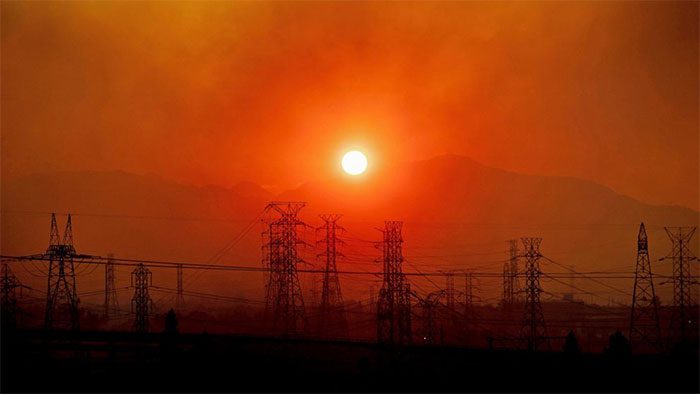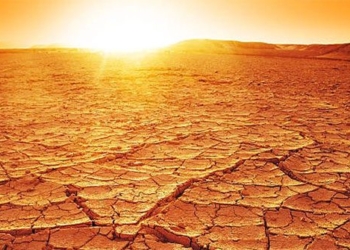According to Bloomberg, a challenging summer is approaching as electricity consumption surges amid an energy crisis, inflation, and the global economy faces its greatest test in decades.
Poverty and Recession
Recently, geopolitical conflicts, droughts, supply chain disruptions, inventory shortages, and the pandemic have forced many economies to struggle against rising commodity prices. However, this summer is expected to worsen the situation.

Pakistan, Myanmar, Sri Lanka, and India will face prolonged power outages due to extreme heat…
With global warming, this summer is predicted to be hotter than before, driving up the demand for fans, air conditioners, and other electricity-consuming devices. Unlike the cold winter, when people can at least burn something for warmth or limit their movements, cooling off in summer is not easy and requires significantly more energy.
Worse, rising energy prices and supply disruptions will leave many areas without enough electricity, especially in poorer countries. Bloomberg reports that over 1 billion people in Pakistan, Myanmar, Sri Lanka, and India will face prolonged power outages due to extreme heat, along with challenges related to health and poverty.
In the U.S., the fact that six power plants in Texas had to operate at full capacity and then broke down temporarily in May 2022, even before summer began, is a clear indication of the dire situation to come.
In China and Japan, the electricity situation is also quite tense, with no surplus available. South Africa is notorious for experiencing continuous power cuts during peak seasons. Even in Europe, the conflict in Ukraine is causing significant strain on the electricity grid.
Bloomberg warns that without sufficient electricity, people will face countless challenges. First, poverty will spread if production activities are halted due to power shortages. The heat will cause many people to fall ill or even die.
Moreover, the economy will also suffer as factories without electricity struggle to operate, while workers find it challenging to cool off during the summer.
In India, the electricity shortage in many states has reached levels nearly as severe as in 2014, when the economy lost up to 5% of its GDP due to extreme heat. This means India could lose nearly $100 billion in GDP if the electricity shortage continues throughout the year.

Electricity demand during the peak season of 2021 far exceeded the average from 2012-2021
Additionally, the increased electricity demand will drive energy prices up, resulting in inflation. For instance, when power plants in Texas had to shut down, the wholesale electricity price in Houston skyrocketed to over $5,000/MWh, 22 times higher than the average peak price.
“The most dangerous scenario is if widespread power outages occur in the current volatile context, it could lead to an unprecedented humanitarian crisis regarding food and energy,” stated Henning Gloystein, an analyst at Eurasia Group.
Regional Situations
United States: The supply of natural gas, the main fuel used by power plants here, is dwindling and prices are rising sharply. The North American Electric Reliability Corporation (NERC) reports that the electricity supply for most of the U.S. and parts of Canada will face significant pressure, prompting citizens to conserve electricity.
In California, the most populous state, a pipeline issue in 2021 limited the state’s ability to import natural gas, leading to pressure on the electricity sector. In Texas, the deterioration of the power grid has resulted in frequent power outages for residents.
Economist Teri Viswanath of CoBank ACB notes that aging infrastructure and maintenance delays due to the pandemic have posed numerous challenges for the U.S. electricity sector.
“The U.S. is experiencing a more severe electricity shortage crisis than any other developed industrial nation. About 70% of our power lines are nearing the end of their lifespan,” she said.
Asia: The southern and southeastern regions near the equator are expected to be the hardest hit this summer as high temperatures stimulate demand for air conditioning. Power outages are already occurring nationwide in several countries like Pakistan, Sri Lanka, and Myanmar, affecting approximately 300 million residents.

The southern and southeastern regions near the equator are expected to be heavily impacted by extreme heat.
In India, 16 out of 28 states with over 700 million people are experiencing power outages of 2-10 hours daily. As a result, the government has had to suspend environmental protection plans to allow coal mines to supply more fuel to thermal power plants.
In China, previous restrictions on coal mining left many thermal power plants without sufficient reserves, leading to widespread power outages in 2021. This year, officials have committed to preventing history from repeating itself by urging coal mines to ramp up production to record levels to supply thermal power plants.
However, the government still warns of strained electricity conditions for heavy industrial zones in southern China due to their distance from domestic coal mining regions, making them reliant on imported materials.
Europe: Bloomberg observes that while Europe uses less air conditioning in private homes, they are still racing to stockpile natural gas due to the conflict in Ukraine. Since most thermal power plants here rely on gas, if Russia cuts supplies, many countries could face power outages.
In Norway, the dry season has reduced the capacity of hydropower plants.
In France, the government has reduced nuclear power output to focus on green energy. This is the third consecutive year France has cut nuclear electricity, which could put significant pressure on its economy this summer.
Returning to the oil and gas situation, some countries like Spain, the UK, and France may seek alternative sources of imports if a crisis occurs, but Eastern European countries like Greece, Latvia, or Hungary, which depend on Russia, will face difficulties if supplies are disrupted.
“I don’t think the people of Europe ever imagined such a scenario. This is something unprecedented for today’s younger generation. Without electricity, there will be no Wi-Fi, no telecommunications signals, no modern conveniences, and life will regress by decades, posing a tremendous challenge for the youth today,” remarked Fabian Ronningen of Rystad Energy.




















































